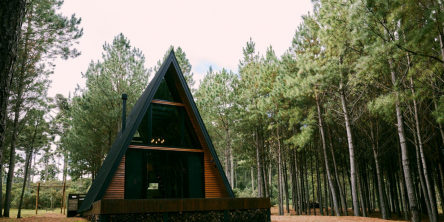The Future of Residential Architecture: Trends and Innovations Shaping Home Design

Key Takeaways
- Modern residential architecture is increasingly incorporating sustainable practices and technology.
- Home designs are being influenced by changing lifestyle needs, including remote work and wellness.
- Innovations like smart home technology and minimalist designs are becoming household standards.
The landscape of residential architecture is undergoing a dynamic transformation driven by sustainability, technological advancements, and evolving lifestyle needs. As new generations seek homes that reflect their values and accommodate their lifestyles, builders and architects are stepping up to create New Homes that are smarter and more sustainable than ever. This shift is not simply about keeping up with trends; it's about redefining what it means to live harmoniously within our environments while maximizing functionality and pleasure.
Integrating eco-friendly materials and advanced technology is steadily becoming standard practice, marking a significant shift in how homes are designed. This evolution is informed by the desire to build spaces that offer more than shelter—they provide a sanctuary and a sense of connection to the wider world. Understanding these trends can help prospective homeowners and industry professionals alike in making informed decisions about their housing needs.
Read more: Turning Plans into Reality: A Step-by-Step Guide to Successful Home Construction and Design
Modern Residential Architecture
Residential architecture isn't just about creating living spaces; it's about building environments that enhance everyday life, making use of sustainable materials, innovative technologies, and designs that cater to modern living needs. The architectural world is witnessing a transformation that aligns with a more holistic approach to living spaces, incorporating functionality, beauty, and sustainability. The philosophy that homes should offer more than mere survival but enrich and elevate living experiences is at the core of modern residential architecture.
The Rise of Sustainable Architecture
As concerns about environmental impact grow, sustainable architecture is emerging not just as a trend but a necessity. Homebuyers consider the environmental footprints of their living spaces to be equally important as aesthetic and cost factors. LEED Certification and other green building standards are leading the push towards energy-efficient homes, using recycled materials and renewable energy sources to reduce carbon footprints and promote healthy living. This shift is influenced by both policy changes and genuine consumer interest in living more sustainably. It reflects a broader awareness of how our living environments can impact the planet's health in the long term.
The Influence of Technology on Home Design
Technology has a dramatic impact on the structure and functionality of homes. Design software and tools like 3D modeling enable architects to create and visualize designs with greater efficiency and accuracy. These digital tools are essential for implementing innovative structures and sustainable practices, helping architects reach beyond traditional building constraints. Additionally, technologies such as augmented reality and virtual reality are being utilized in the planning stages, providing potential homeowners and architects with a more immersive view of proposed designs. This advancement not only assists in more efficient planning and execution but also allows for a more engaging and collaborative design process, both for professionals and clients.
Adapting to Lifestyle Changes
With the increase in remote working, residential architecture adapts by incorporating multipurpose spaces seamlessly blending work and home life. Spaces are specifically designed to be flexible and adaptable to different uses without compromising comfort or style. The pandemic has accelerated these trends, leading architects to rethink how homes can better accommodate a wider variety of family and work needs. Spaces that were once distinctly for dining or entertaining are now transformed into offices, gyms, or study areas, underscoring the need for versatility in home design. This reflects a growing trend where homes are no longer just places of shelter but become integrated hubs that support all facets of modern living, from work to recreation.
Exploring Minimalist and Open-Concept Designs
Minimalism offers more than a design aesthetic; it embodies a lifestyle philosophy focused on simplicity and intentional living. Open-concept designs have gained popularity as they encourage interaction and adaptability. These spaces are structured to allow natural light to flow freely, creating a spacious feel and enhancing aesthetics. The open floor plan removes the traditional compartmentalized structure of rooms, offering a blank canvas that can be adapted to serve multiple functions. The appeal of minimalism lies in reducing clutter and emphasizing essential elements, thereby improving the home's mental clarity and emotional well-being.
Integrating Wellness into Home Spaces
Today's homes focus on wellness, integrating elements that support physical and mental health. Biophilic design principles bring nature indoors, incorporating natural materials, plants, and sunlight. Architects strive to create homes that not only meet functional needs but also contribute to the occupants' overall well-being. Features like integrated air purification systems, ergonomic designs, and acoustically optimized interiors are becoming standard in wellness-focused architecture. This focus on health reflects an understanding that environments have a direct impact on quality of life, encouraging designs that promote relaxation and mindfulness.
The Role of Smart Home Innovations
Smart home technology is transforming the way we interact with our living spaces. These technologies offer advanced systems that control lighting, climate, security, and entertainment, providing convenience and efficiency. Innovations in smart home features demonstrate how intelligence in home management is becoming a cornerstone of modern design, providing greater energy efficiency and comfort. As these technologies become more accessible, they also offer personalized experiences, allowing homeowners to tailor their environments to suit specific needs and preferences, further highlighting the role of adaptability in contemporary architecture.
The Future Outlook for Residential Architecture
The future of residential architecture looks promising with continued innovations and adaptations to meet environmental and social needs. As demographic changes and technological advancements continue, homes will become even more integrated, responsive, and adaptive to the needs of their inhabitants. This integration will likely see homes becoming more embedded in their natural surroundings while simultaneously infused with advanced technology that supports sustainable life. The convergence of sustainability, technology, and innovative design will continue to redefine what a home means, moving us toward a future where residential architecture harmonizes with the natural world in new and exciting ways.
Similar Articles
Are you feeling overwhelmed by the idea of finding the right home? Choosing a home is one of the biggest decisions you’ll ever make. It’s not just about finding a place to live—it’s about creating a space for yourself where you feel comfortable and happy
Explore the rise of off-grid and alternative living spaces, from tiny homes to container conversions. Learn how sustainable design, insulation, and innovation are reshaping modern housing.
Who doesn’t love the idea of snagging a real estate deal before the competition even knows it exists? Finding undervalued properties in today’s market can feel like searching for a needle in a haystack, but with the right strategies, you can spot hidden real estate gems before they go mainstream.
Nashville isn’t just famous for its music and hot chicken; it’s also a booming rental market. With an influx of aspiring artists, young professionals, and short-term tourists, the competition for top-dollar tenants is as fierce as a Broadway honky-tonk on a Friday night.
Discover the magic of Yellowstone property management—balance nature, guests, and investment while preserving the park’s beauty. Explore tips for success!
Considering selling your home fast for cash? Learn the pros, including avoiding fees, quick transactions, and fewer hassles in this helpful guide
Discover essential tips for first-time homebuyers, from budgeting and loans to inspections, incentives, and long-term planning for smooth homeownership!
Generation leads finding potential buyers or sellers is essential in Australian real estate, whether you are new or experienced agent. Real estate lead generators provide tools and strategies that enable agents to attract these potential clients and convert them into actual clients who become buyers or sellers.
Discover essential tips for earning your real estate license online, from choosing courses to acing exams. Start your real estate career today!









